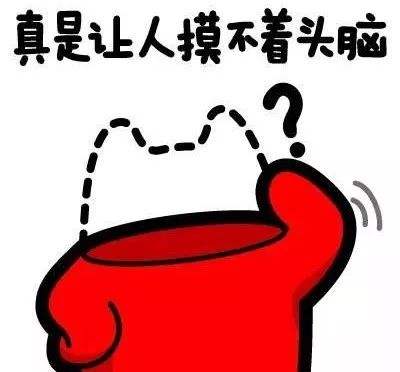24 字符串类型内置方法
目录
str(掌握)
1.用途:描述性质的东西,如人的名字、单个爱好、地址、国家等
2.定义:使用''、""、''''''、""""""包裹的的一串字符
- u'unicode': unicode编码的字符串
- b'101': 二进制编码的字符串
- r'\n': 原生字符串,也就是说'\n'这是普通的两个字符,并没有换行的意思
name = 'tank' # name =str('tank')
s1 = str(1.1)
s2 = str([1, 2, 3])
print(f's1:{s1}, type:{type(s1)}')
print(f's2:{s2}, type:{type(s2)}')s1:1.1, type:<class 'str'>
s2:[1, 2, 3], type:<class 'str'>3.常用操作+内置方法:常用操作和内置方法分为优先掌握(今天必须得记住)、需要掌握(一周内记住)、其他操作(了解)三个部分。

优先掌握(*****)
- 按索引取值
- 切片
- 长度len
- 成员运算in|not in
- 移除空白strip
- 切分split
1.按索引取值(只可取不可改变)
# str索引取值
msg = 'hello tank'
# 0123456789 # 索引序号
print(f'索引为6: {msg[6]}')
print(f'索引为-3: {msg[-3]}')索引为6: n
索引为-3: i2.切片(顾头不顾尾,步长)
# 索引切片
msg = 'hello tank'
# 0123456789 # 索引序号
print(f'切片3-最后: {msg[3:]}')
print(f'切片3-8: {msg[3:8]}')
print(f'切片3-8,步长为2: {msg[3:8:2]}')
print(f'切片3-最后,步长为2: {msg[3::2]}')
# 了解,步长为正从左到右;步长为负从右到左
print('\n**了解知识点**')
print(f'切片所有: {msg[:]}')
print(f'反转所有: {msg[::-1]}')
print(f'切片-5--2: {msg[-5:-2:1]}')
print(f'切片-2--5: {msg[-2:-5:-1]}')切片3-最后: lo tank
切片3-8: lo ni
切片3-8,步长为2: l i
切片3-最后,步长为2: l ik
**了解知识点**
切片所有: hello tank
反转所有: kcin olleh
切片-5--2: ni
切片-2--5: cin
3.长度len
# str长度
msg = 'hello tank'
print(len(msg))104.成员运算in和not in
# str成员运算
msg = 'my name is tank, tank handsome'
print(f"'tank' in msg: {'tank' in msg}")
print(f"'jason' not in msg: {'jason' not in msg}")
print(f"not 'jason' in msg: {not 'jason' in msg}")'tank' in msg: True
'jason' not in msg: True
not 'jason' in msg: True5.移除空白strip()
# str移除空白strip()
name = '&&&n ick'
print(f"name.strip('&'): {name.strip('&')}") # strip()默认为‘ ’,并且不修改原值,新创建空间
print(f"name: {name}")
# strip()应用场景
pwd = input('password: ') # 用户可能会手抖输入空格
if pwd.strip() == '123':
print('密码输入成功')
print(f"'*-& tank+'.strip('*-& +'): {'*-& tank+'.strip('*-& +')}")name.strip('&'): n ick
name: &&&n ick
password: 123
密码输入成功
'*-& tank+'.strip('*-& +'): tank6.切分split
# str切分split
info = 'tank:male:19'
info_list1 = info.split(':')
info_list2 = info.split(':', 1)
print(f'info_list1:{info_list1}')
print(f'info_list2:{info_list2}')info_list1:['tank', 'male', '19']
info_list2:['tank', 'male:19']7.循环
msg = 'hello tank'
for i in msg:
print(i)h
e
l
l
o
n
i
c
k需要掌握(****)
- lstrip&rstrip
- lower&upper
- startswith&endswith
- rsplit
- join
- replace
- isdigit
1.lstrip()和rstrip()
# str之lstrip()和rstrip()
name = '&&tank&&'
print(f"tank.lstrip('&'): {name.lstrip('&')}")
print(f"tank.rstrip('&'): {name.rstrip('&')}")tank.lstrip('&'): tank&&
tank.rstrip('&'): &&tank2.lower()和upper()
# str之lower()和upper()
name = 'tank Chen'
print(f"name.upper(): {name.lower()}")
print(f"name.upper(): {name.upper()}")name.upper(): tank chen
name.upper(): tank CHEN3.startswith()和endswith()
# str之startswith()和endswith()
name = 'tank Chen'
print(f"name.startswith('tank'): {name.startswith('tank')}")
print(f"name.endswith('chen'): {name.endswith('chen')}")name.startswith('tank'): True
name.endswith('chen'): False4.rsplit()
# str之rsplit()
info = 'tank:male:19'
print(f"info.rsplit(':', 1): {info.rsplit(':', 1)}") # 从右开始切割info.rsplit(':', 1): ['tank:male', '19']5.join()
lis = [1,2,'19']
print(f"':'.join(lis): {':'.join(lis)}") # 报错,数字不可和字符串拼接# str之join()
lis = ['tank', 'male', '19']
print(f"':'.join(lis): {':'.join(lis)}")':'.join(lis): tank:male:196.replace()
# str值replace()
name = 'tank shuai'
print(f"name.replace('shuai','handsome'): {name.replace('shuai','handsome')}")name.replace('shuai','handsome'): tank handsome
7.isdigit()
# str值isdigit()
salary = '111'
print(salary.isdigit()) # True
salary = '111.1'
print(salary.isdigit()) # FalseTrue
False# str之isdigit()应用场景
age = input('age: ')
if age.isdigit():
age = int(age)
if age < 18:
print('小姐姐')
else:
print('阿姨好')
else:
print(f'你的年龄能是这个{age}?')age: 逗你玩?
你的年龄能是这个逗你玩??
其他操作(**)
- find|rfind|index|rindex|count
- center|ljust|rjust|zfill
- expandtabs
- captalize|swapcase|title
- is系列
1.find()、rfind()、index()、rindex()、count()
# str之find()、rfind()、index()、rindex()、count()
msg = 'my name is tank, tank shi sb, hha'
print(f"msg.find('tank'): {msg.find('tank')}") # 找不到返回-1
print(f"msg.find('tank',0,3): {msg.find('tank',0,3)}")
print(f"msg.rfind('tank'): {msg.rfind('tank')}") # 找不到返回-1
print(f"msg.index('tank'): {msg.index('tank')}") # 找不到报错
print(f"msg.rindex('tank'): {msg.rindex('tank')}") # 找不到报错
print(f"msg.count('tank'): {msg.count('tank')}")msg.find('tank'): 11
msg.find('tank',0,3): -1
msg.rfind('tank'): 17
msg.index('tank'): 11
msg.rindex('tank'): 17
msg.count('tank'): 22.center()、ljust()、rjust()、zfill()
# str之center()、ljust()、rjust()、zfill()
print(f"'info tank'.center(50,'*'): {'info tank'.center(50,'*')}")
print(f"'info tank'.ljust(50,'*'): {'info tank'.ljust(50,'*')}")
print(f"'info tank'.rjust(50,'*'): {'info tank'.rjust(50,'*')}")
print(f"'info tank'.zfill(50): {'info tank'.zfill(50)}") # 默认用0填充'info tank'.center(50,'*'): ********************info tank*********************
'info tank'.ljust(50,'*'): info tank*****************************************
'info tank'.rjust(50,'*'): *****************************************info tank
'info tank'.zfill(50): 00000000000000000000000000000000000000000info tank3.expandtabs()
# str之expandtabs()
print(f"a\\tb\\tc: %s"%('a\tb\tc\t')) # 默认制表符8个空格
print(f"'a\\tb\\tc'.expandtabs(32): %s"%('a\tb\tc\t'.expandtabs(32)))a\tb\tc: a b c
'a\tb\tc'.expandtabs(32): a b c 4.captalize()、swapcase()、title()
# str之captalize()、swapcase()、title()
name = 'tank handsome sWAPCASE'
print(f"name.capitalize(): {name.capitalize()}")
print(f"name.swapcase(): {name.swapcase()}") # 大小写互转
print(f"name.title(): {name.title()}")name.capitalize(): tank handsome swapcase
name.swapcase(): tank HANDSOME Swapcase
name.title(): tank Handsome Swapcase5.is数字系列(只是为了告诉你,判断是否为数字时除了中文数字以后使用isdigit()即可)
- isdecimal(): 检查字符串是否值包含十进制字符,如果是返回True,否则返回False。
- isdigit(): 如果字符串只包含数字则返回True,否则返回False。
- isnumeric(): 如果字符串中只包含数字字符,则返回True,否则返回False。
num = "1" #unicode
num.isdigit() # True
num.isdecimal() # True
num.isnumeric() # True
num = "1" # 全角
num.isdigit() # True
num.isdecimal() # True
num.isnumeric() # True
num = b"1" # byte
num.isdigit() # True
num.isdecimal() # AttributeError 'bytes' object has no attribute 'isdecimal'
num.isnumeric() # AttributeError 'bytes' object has no attribute 'isnumeric'
num = "IV" # 罗马数字
num.isdigit() # True
num.isdecimal() # False
num.isnumeric() # True
num = "四" # 汉字
num.isdigit() # False
num.isdecimal() # False
num.isnumeric() # True
===================
isdigit()
True: Unicode数字,byte数字(单字节),全角数字(双字节),罗马数字
False: 汉字数字
Error: 无
isdecimal()
True: Unicode数字,全角数字(双字节)
False: 罗马数字,汉字数字
Error: byte数字(单字节)
isnumeric()
True: Unicode数字,全角数字(双字节),罗马数字,汉字数字
False: 无
Error: byte数字(单字节)
================
import unicodedata
unicodedata.digit("2") # 2
unicodedata.decimal("2") # 2
unicodedata.numeric("2") # 2.0
unicodedata.digit("2") # 2
unicodedata.decimal("2") # 2
unicodedata.numeric("2") # 2.0
unicodedata.digit(b"3") # TypeError: must be str, not bytes
unicodedata.decimal(b"3") # TypeError: must be str, not bytes
unicodedata.numeric(b"3") # TypeError: must be str, not bytes
unicodedata.digit("Ⅷ") # ValueError: not a digit
unicodedata.decimal("Ⅷ") # ValueError: not a decimal
unicodedata.numeric("Ⅷ") # 8.0
unicodedata.digit("四") # ValueError: not a digit
unicodedata.decimal("四") # ValueError: not a decimal
unicodedata.numeric("四") # 4.0
#"〇","零","一","壱","二","弐","三","参","四","五","六","七","八","九","十","廿","卅","卌","百","千","万","万","亿"6.is其他
- isalnum(): 如果字符串至少有一个字符并且所有字符都是字母或数字则返回True,否则返回False。
- isalpha(): 如果字符串至少有一个字符并且所有字符都是字母则返回True,否则返回False。
- islower(): 如果字符串中只包含至少一个区分大小写的字符,并且所有这些(区分大小写的)字符都是小写,则返回True,否则返回False。
- isspace(): 如果字符串中只包含空白,则返回True,否则返回False
- isupper(): 如果字符串中包含至少一个区分大小写的字符,并且所有这些(区分大小写的)字符都是大写,则返回True,否则返回False。
- istitle(): 如果字符串是标题类型的(见title()),则返回True,否则返回False。

4.存一个值or多个值:一个值
5.有序or无序:只要是有索引的,都是有序的,因此字符串是有序的。
name = 'tank'
print(f'first:{id(name)}')
name = 'tank handsome'
print(f'second:{id(name)}')first:4377100160
second:43778412646.可变or不可变:不可变数据类型





 浙公网安备 33010602011771号
浙公网安备 33010602011771号